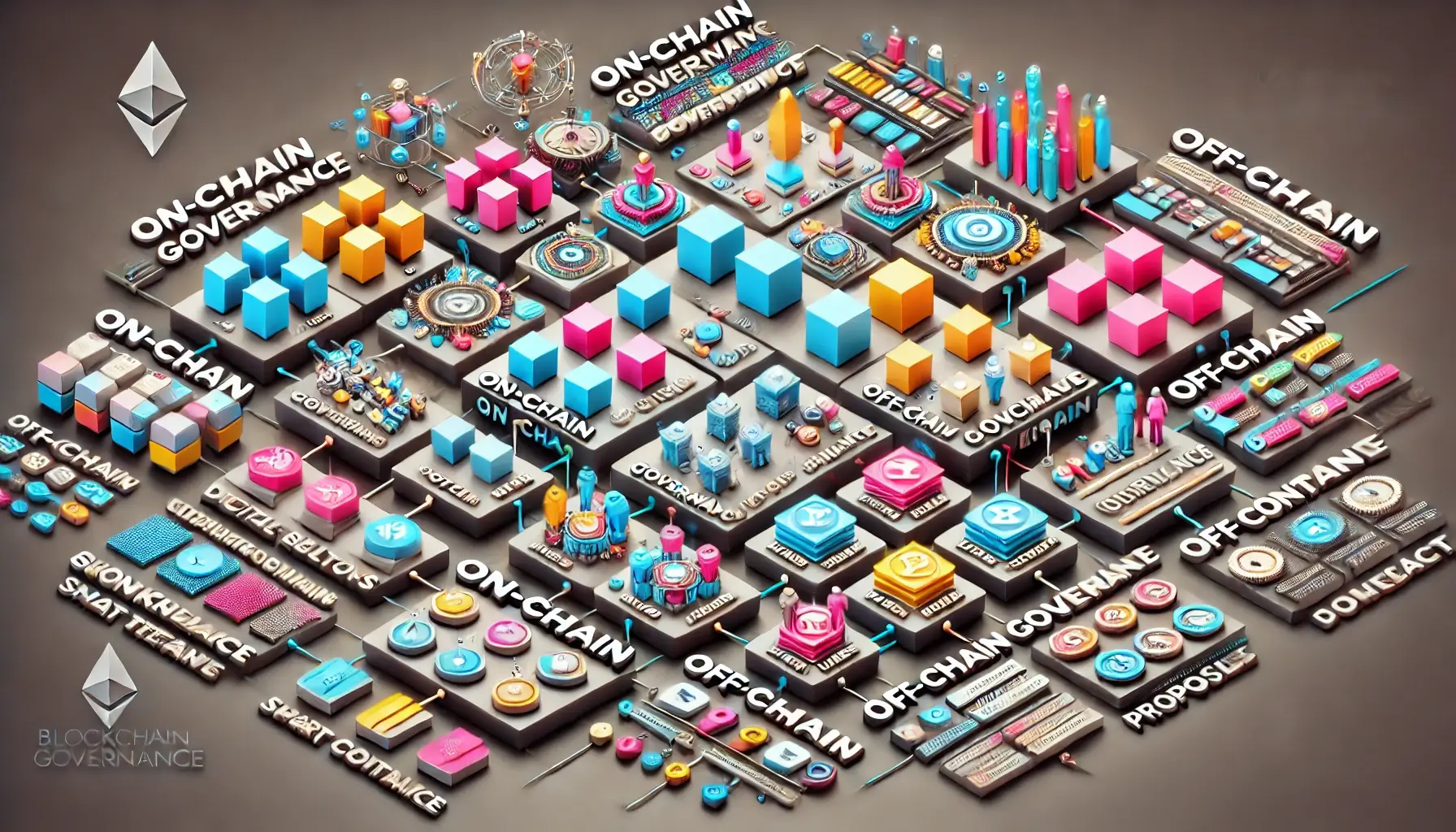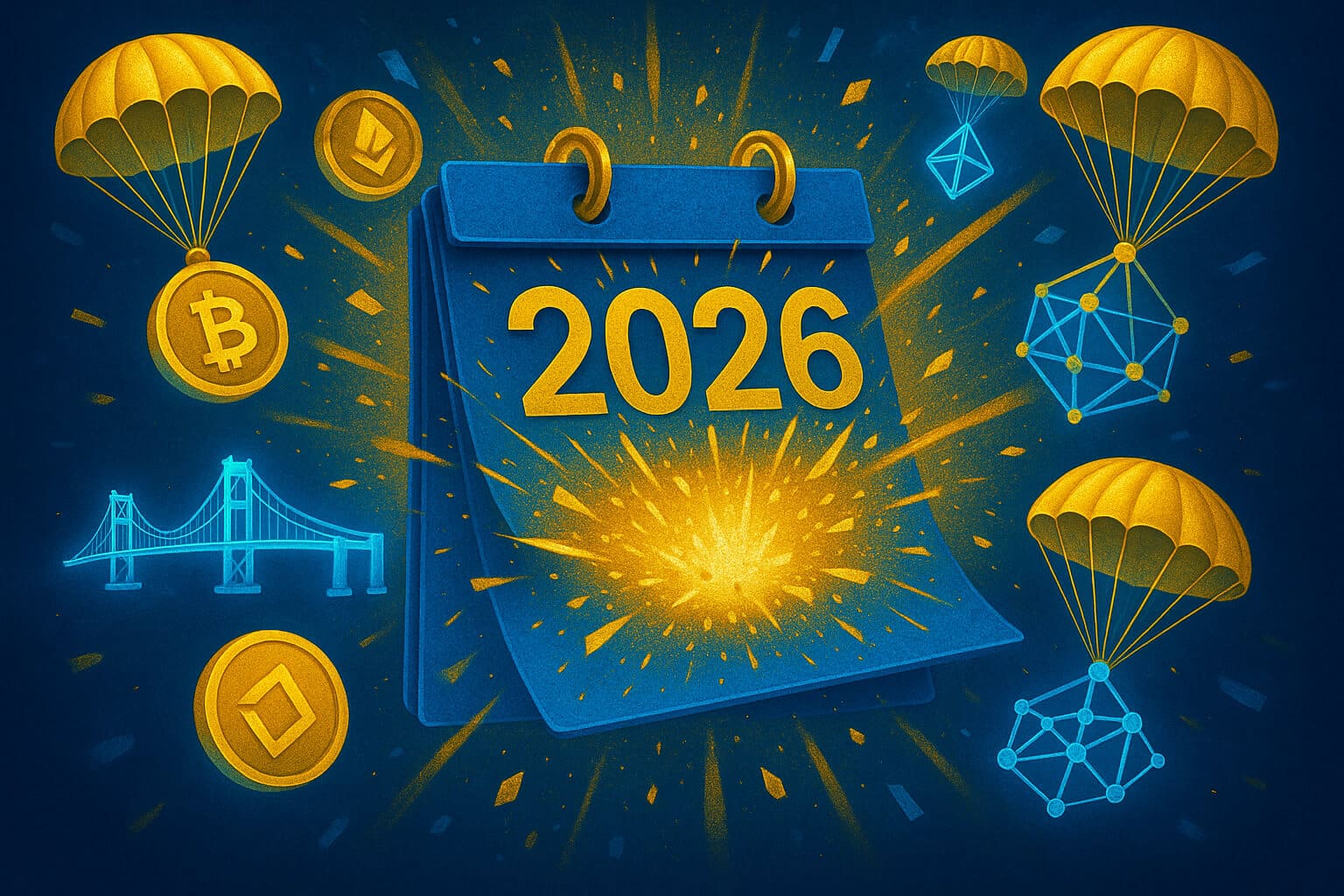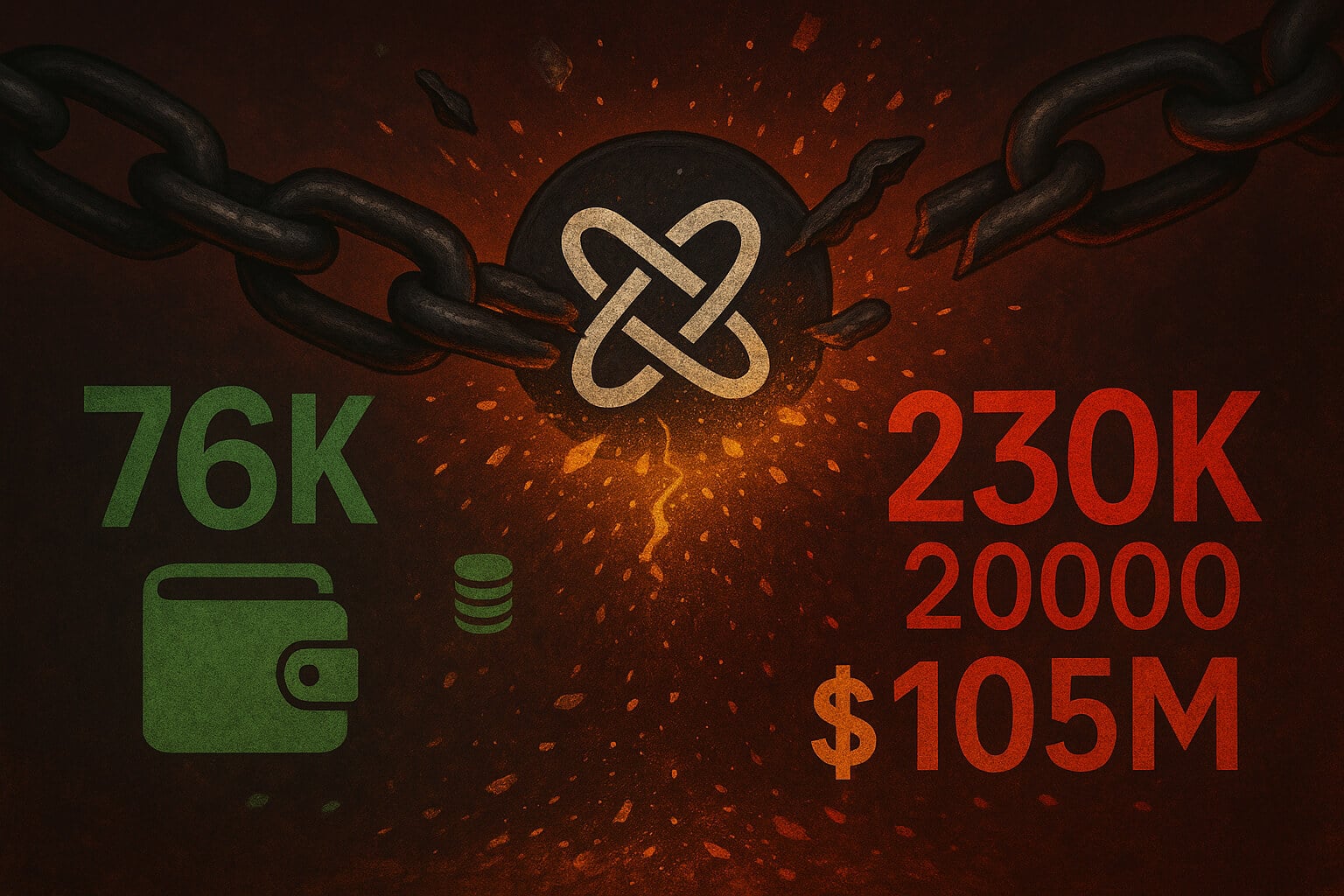1. Introduction to Governance in Blockchain
Blockchain technology is often hailed for its decentralized nature, allowing for trustless transactions and operations without the need for central authorities. However, with decentralization comes the challenge of governance how decisions are made, rules are enforced, and conflicts are resolved within a blockchain network. Governance in blockchain projects is critical for ensuring stability, fostering trust among participants, and enabling long-term success. In this article, we’ll explore the importance of governance in blockchain projects, the different models of governance, and how effective governance can be implemented in decentralized networks.
2. What is Blockchain Governance?
Before diving into its importance, it’s essential to understand what blockchain governance entails.
A. Defining Blockchain Governance
refers to the framework and processes through which decisions are made within a blockchain network. It includes the rules, procedures, and mechanisms that determine how a blockchain evolves over time. Governance ensures that stakeholders, such as developers, miners, validators, and token holders have a say in the direction and operation of the network.
- On-Chain Governance: This type of governance involves decision-making processes that are encoded directly into the blockchain’s protocol. Participants vote on changes or upgrades to the network through mechanisms like governance tokens or smart contracts. Examples include Tezos and Polkadot, where on-chain voting allows token holders to propose and approve protocol upgrades.
- Off-Chain Governance: Off-chain governance occurs outside the blockchain protocol and typically involves more informal or social consensus mechanisms. Decisions are made through discussions in forums, community meetings, or by core development teams. Bitcoin and Ethereum are examples of blockchains that rely primarily on off-chain governance.
B. Why Governance Matters in Blockchain Projects
Governance is crucial in blockchain projects for several reasons:
- Stability: Effective governance helps maintain network stability by providing a structured process for implementing changes and resolving conflicts. Without clear governance, disagreements over protocol changes can lead to hard forks, splitting the community and the blockchain itself.
- Trust and Legitimacy: Governance builds trust among participants by ensuring that decision-making processes are transparent, fair, and inclusive. When stakeholders feel that their voices are heard, they are more likely to support the network and contribute to its growth.
- Long-Term Success: Governance mechanisms that adapt to changing circumstances and stakeholder needs can help ensure the long-term viability of a blockchain project. Governance allows networks to evolve in response to technological advancements, regulatory changes, and market demands.
3. Types of Blockchain Governance Models
Different blockchain projects implement governance in various ways, depending on their goals, community size, and technical design. Below are some common governance models in blockchain:
A. Decentralized Autonomous Organizations (DAOs)
DAOs are a popular governance model in blockchain, where decision-making is decentralized and managed through smart contracts. DAOs operate without a central authority, allowing participants to vote on proposals and decisions that affect the network.
- Example: MakerDAO: MakerDAO is one of the most well-known DAOs in the blockchain space. It governs the Maker Protocol, which manages the DAI stablecoin. MKR token holders vote on critical decisions, such as adjusting the stability fee or adding new collateral types. This decentralized governance structure ensures that the protocol remains stable and responsive to market conditions.
- Advantages: DAOs offer high levels of transparency and inclusivity, as all decisions are recorded on the blockchain and accessible to the public. They also reduce the risk of centralization, as no single entity controls the network.
- Challenges: DAOs can be slow to make decisions due to the need for widespread consensus. Additionally, voter apathy or concentration of voting power in the hands of a few large stakeholders can undermine the effectiveness of governance.
B. Governance by Consensus
In some blockchain networks, governance is achieved through consensus among participants, particularly among developers and validators. This model relies on informal agreements and social consensus to make decisions.
- Example: Bitcoin: Bitcoin is governed primarily through off-chain consensus among its core developers, miners, and the broader community. Changes to the Bitcoin protocol, such as the implementation of Segregated Witness (SegWit), are proposed and debated in forums and developer meetings before being adopted by miners and node operators.
- Advantages: Governance by consensus allows for flexibility and adaptability, as decisions can be made without rigid procedures. It also fosters a strong sense of community, as participants collaborate to shape the network’s future.
- Challenges: This model can lead to prolonged debates and disagreements, delaying necessary changes or upgrades. In some cases, unresolved conflicts can result in hard forks, as seen with Bitcoin and Bitcoin Cash.

C. Hybrid Governance Models
Hybrid governance models combine elements of both on-chain and off-chain governance. These models aim to balance the transparency and efficiency of on-chain governance with the flexibility of off-chain decision-making.
- Example: Ethereum: Ethereum’s governance combines on-chain elements, such as the Ethereum Improvement Proposal (EIP) process, with off-chain discussions among developers, researchers, and the community. EIPs are proposals for changes to the Ethereum protocol, which are reviewed and debated before being implemented in the network’s code.
- Advantages: Hybrid models offer a balance between transparency and adaptability, allowing for a more comprehensive decision-making process. They can also mitigate the risks associated with relying solely on either on-chain or off-chain governance.
- Challenges: The complexity of hybrid models can make governance processes harder to understand for participants, potentially leading to lower engagement. Ensuring coordination between on-chain and off-chain mechanisms is also challenging.
4. Implementing Effective Governance in Blockchain Projects
Effective governance in blockchain projects requires careful planning and execution. Below are key steps to implementing governance that works.
A. Establish Clear Governance Rules and Processes
The foundation of effective governance is a clear and well-defined set of rules and processes. These should outline how decisions are made, who can participate in governance, and how conflicts are resolved.
- Document Governance Structures: Create a governance charter that details the roles, responsibilities, and rights of all stakeholders. For example, the charter should specify how proposals are submitted, how votes are counted, and how decisions are implemented.
- Define Voting Mechanisms: Choose the appropriate voting mechanisms for your project. Options include simple majority voting, quadratic voting (where votes are weighted by stake), or liquid democracy (where participants can delegate votes to trusted representatives).
- Ensure Transparency: Make all governance processes transparent by recording them on-chain whenever possible. Publish meeting minutes, proposal outcomes, and voting records so that all participants can review and audit the decision-making process.
B. Encourage Community Participation
For governance to be effective, it must engage a broad base of stakeholders. This ensures that decisions reflect the diverse interests of the community.
- Promote Inclusivity: Encourage participation from all stakeholder groups, including developers, miners, validators, and token holders. Use communication channels like forums, social media, and community calls to gather input and feedback.
- Incentivize Voting: Implement incentives for active participation in governance. For example, reward voters with governance tokens or other benefits for casting their votes on proposals. This can help combat voter apathy and increase engagement.
- Educate Participants: Provide resources and education to help participants understand the governance process. This could include tutorials, webinars, or explainer videos on how to vote, submit proposals, or delegate voting power.
C. Adapt Governance to Changing Needs
Blockchain projects operate in dynamic environments, where technological advances, regulatory changes, and market conditions can rapidly evolve. Governance structures must be flexible enough to adapt to these changes.
- Regularly Review Governance Processes: Periodically assess the effectiveness of your governance model and make adjustments as needed. For example, if voter participation is low, consider simplifying the voting process or introducing new incentives.
- Implement Feedback Loops: Create mechanisms for continuous feedback from the community. This could include surveys, polls, or open forums where participants can voice their opinions on governance processes.
- Be Open to Experimentation: Don’t be afraid to experiment with new governance models or tools. The blockchain space is still evolving, and innovative approaches to governance can lead to better outcomes. For instance, experimenting with different voting algorithms or decentralized identity systems could enhance governance efficiency.
5. The Future of Governance in Blockchain Projects
Governance in blockchain projects is still a relatively young field, with much room for innovation and improvement. As blockchain technology matures, so too will the governance structures that underpin it.
- Decentralized Governance at Scale: As blockchain networks grow, scaling decentralized governance will become increasingly important. New tools, such as decentralized identity (DID) systems and reputation-based voting, could play a crucial role in making governance more scalable and effective.
- Integration with Traditional Governance: In the future, we may see more integration between blockchain governance and traditional governance structures, such as corporate governance or public sector decision-making. This could lead to hybrid models where blockchain-based governance complements existing systems, bringing greater transparency and accountability to traditional organizations.
- Regulatory Influence: As governments around the world develop regulations for blockchain and cryptocurrencies, these regulations will likely influence governance models. Projects that can effectively navigate regulatory challenges while maintaining decentralization will have a competitive advantage.
A Pillar of Decentralized Success
Governance is a fundamental aspect of any successful blockchain project. It ensures that decisions are made transparently, fairly, and inclusively, helping to maintain stability and trust within the network. As the blockchain space continues to evolve, the development of innovative governance models will be crucial for the long-term success of decentralized projects. By understanding and implementing effective governance, blockchain projects can navigate challenges, adapt to change, and continue to thrive in an increasingly complex and competitive landscape.
For more insights and detailed guides on blockchain governance, visit our Cryptocurrency Comparisons Guides.
Stay Updated
For the latest updates on blockchain governance and related topics, follow us on:
Stay informed with the latest strategies and insights in the world of cryptocurrency at FreeCoins24.io.
Special Offer
Looking to optimize your involvement in blockchain governance? Sign up on Bybit today and take advantage of up to $30,000 in deposit bonuses. Don’t miss out on the opportunity to engage with leading blockchain projects on a trusted platform.















